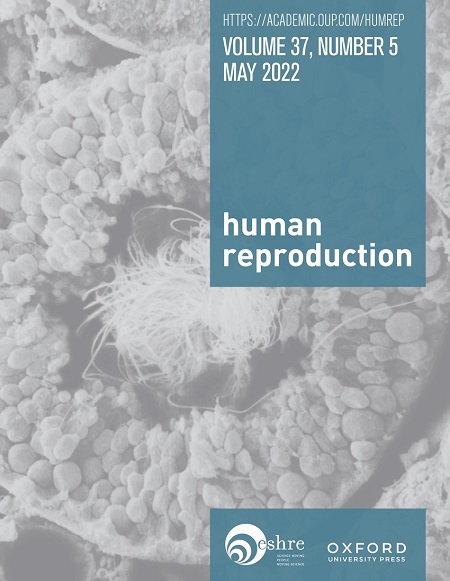试图自然受孕或使用体外受精的不孕妇女子宫内膜异位症进展的风险。
IF 6
1区 医学
Q1 OBSTETRICS & GYNECOLOGY
引用次数: 0
摘要
近年来,使用激素治疗子宫内膜异位症的情况有所增加。其功效在于创造稳定的激素环境,降低外周雌激素水平,抑制排卵和月经。虽然这些药物不能治愈子宫内膜异位症,而且停药后症状经常会复发,但它们在大多数情况下有效地缓解了疼痛,并有助于预防疾病进展或复发。因此,女性通常接受长期激素治疗,无论是否进行手术。然而,这种方法不适合那些寻求自然怀孕或接受体外受精的人,因为所有激素治疗都会阻碍受孕。对于寻求自然怀孕的妇女,这些治疗应该停止大约1年,这是诊断不孕症所需的时间。然而,这种暂停使妇女面临复发或进展的风险,因此只有在妇女有合理的自然怀孕可能性的情况下,临床才可接受。对于患有子宫内膜异位症的不孕妇女,需要体外受精,卵巢刺激会显著提高雌激素水平,达到自然周期的10倍,这可能会增加子宫内膜异位症复发的风险。尽管一些有限的数据表明卵巢刺激可能会促进深度侵袭性子宫内膜异位症的进展,但在这个问题上的证据是令人放心的。总的来说,医生和患者必须权衡自然妊娠或art辅助妊娠的机会与停药或IVF期间疾病复发或进展的风险。由于子宫内膜异位症患者发生严重妊娠并发症的风险增加,这一选择也变得更加复杂,这可能取决于受孕方法。本综述讨论了可用于指导决策过程的现有证据。本文章由计算机程序翻译,如有差异,请以英文原文为准。
Risk of endometriosis progression in infertile women trying to conceive naturally or using IVF.
The use of hormonal treatments for endometriosis has increased in recent years. Their effectiveness lies in creating a stable hormonal environment, reducing peripheral estrogen levels, and suppressing ovulation and menstruation. Although these agents do not cure endometriosis and symptoms often return after discontinuation, they effectively relieve pain in most cases and help prevent disease progression or recurrence. Women are therefore typically managed with long-term hormonal treatments, with or without surgery. However, this approach is unsuitable for those seeking natural pregnancy or undergoing IVF, as all hormonal treatments hinder conception. For women pursuing natural pregnancy, these treatments should be discontinued for about 1 year, the time needed to diagnose infertility. However, this suspension exposes women to the risk of recurrence or progression and is therefore clinically acceptable only if the woman has a reasonable likelihood of achieving pregnancy naturally. In women with endometriosis who are infertile and therefore require IVF, ovarian stimulation significantly raises estrogen levels-up to 10 times those of a natural cycle-potentially boosting the risk of endometriosis relapse. Evidence is reassuring on this issue even if some limited data suggest that ovarian stimulation may promote deep invasive endometriosis progression. Overall, physicians and patients must balance the chances of natural or ART-assisted pregnancy against the risk of disease recurrence or progression during treatment discontinuation or IVF. This choice is also complicated by the increased risk of severe pregnancy complications in women with endometriosis, possibly depending on the conception method. This review discusses the available evidence that can be helpful in guiding the decision-making process.
求助全文
通过发布文献求助,成功后即可免费获取论文全文。
去求助
来源期刊

Human reproduction
医学-妇产科学
CiteScore
10.90
自引率
6.60%
发文量
1369
审稿时长
1 months
期刊介绍:
Human Reproduction features full-length, peer-reviewed papers reporting original research, concise clinical case reports, as well as opinions and debates on topical issues.
Papers published cover the clinical science and medical aspects of reproductive physiology, pathology and endocrinology; including andrology, gonad function, gametogenesis, fertilization, embryo development, implantation, early pregnancy, genetics, genetic diagnosis, oncology, infectious disease, surgery, contraception, infertility treatment, psychology, ethics and social issues.
 求助内容:
求助内容: 应助结果提醒方式:
应助结果提醒方式:


